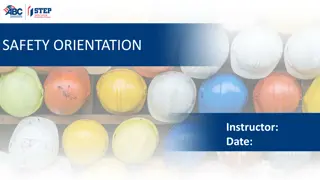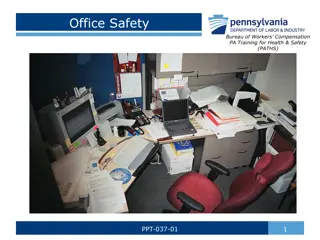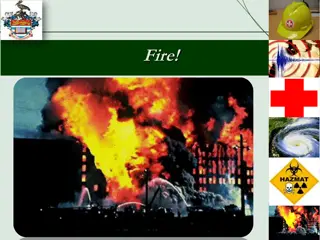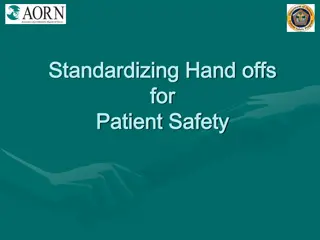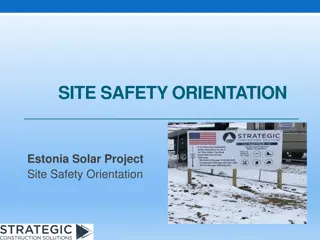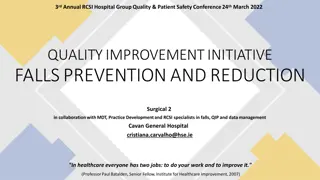Comprehensive Fall Prevention Practices for Patient Safety
Explore the essential fall prevention practices implemented at the center to ensure patient safety, including universal precautions, risk factor assessments, post-fall procedures, and tailored interventions. Learn how staff training, environmental modifications, equipment protocols, and patient-specific measures contribute to a culture of safety and minimize fall risks in healthcare settings.
Download Presentation

Please find below an Image/Link to download the presentation.
The content on the website is provided AS IS for your information and personal use only. It may not be sold, licensed, or shared on other websites without obtaining consent from the author. Download presentation by click this link. If you encounter any issues during the download, it is possible that the publisher has removed the file from their server.
E N D
Presentation Transcript
Add name of center Fall Prevention Practices
Goals Learn about: Universal fall precautions in use Assessment of fall risk factors How risk factors are incorporated into care of the patient How to assess and manage patients after a fall How data on falls is collected and used
Fall Prevention Practices Fall prevention practices include four separate activities: Universal fall precautions Standardized assessment of fall risk factors Care and interventions that address risk factors Post-fall procedures, including clinical review and huddles
Adapted to Fit This Center The practices have been selected and are used based on the type of patients, procedures/surgeries and care flow in this center.
Universal Fall Precautions They apply to all patients. The purpose is to keep all patients safe. All staff who interact with patients will be trained on universal fall precautions. Fall prevention is part of our center s safety culture.
Universal Fall Precautions Environment Maintain clear pathways Keep patient care areas uncluttered Have sturdy handrails in patient bathrooms, hallways and rooms Keep floors clean and dry Clean up all spills promptly
Universal Fall Precautions Equipment Keep stretcher/bed brakes locked Place the stretcher/bed in lowest position Raise stretcher/bed to a comfortable height when the patient is transferring out of bed Keep wheelchair wheel locks in locked position when stationary Discharge patient from center in wheelchair
Universal Fall Precautions Patient Demonstrate call light/bell use and keep call light/bell within patient reach Keep patient s personal possessions within safe reach Keep no-slip and well-fitting footwear on the patient Staff assist patient to and from bathroom Staff assists patient when dressing
Fall Risk Assessment Tool Morse Fall Scale For adult patients Helps identify patients at risk Score provides basis for care interventions Risk assessment is performed for all adult patients
Morse Fall Scale History of falling (in last 3 months): Yes or No Two or more secondary diagnoses in chart: Yes or No Ambulatory aid: None Crutches/cane/walker Furniture
Morse Fall Scale IV or heparin lock: Yes or No Gait: Normal/wheelchair Weak: Short steps (may shuffle), stooped but able to lift head while walking, may seek support from furniture while walking, but with light touch (for reassurance) Impaired: Short steps with shuffle; may have difficulty arising from chair; head down; significantly impaired balance, requiring furniture, support person, or walking aid to walk
Morse Fall Scale Mental status: Oriented to own ability Overestimates/forgets limitations
Morse Fall Scale Record score for each of above items, then add to get a total score Total score and associated risk level: Score is less than 25: low risk Score is 25 to 45: moderate risk Score is more than 45: high risk
Care Plan For all patients with a score of 25 or more, apply a yellow wrist band. Your clinical judgment should be applied regardless of score All our patients have heightened risk due to sedation / anesthesia / analgesia / surgery Review areas of concern identified at risk assessment and Select interventions to address each area of risk Communicate interventions to all staff who care for the patient Share the plan with the patient and family members
Sample Interventions For history of falling: Attend patient when changing and toileting Assist all transfers Wheelchair to vehicle For secondary diagnoses tailor based on condition (e.g. impaired vision) and medications (e.g., medication that causes orthostasis)
Sample Interventions For ambulatory aid: Keep ambulatory aid at bedside Advise patient to wait for staff assistance when mobilizing Review dangers of using equipment (e.g., IV pole) as an ambulatory aid For IV/heparin lock: Advise patient to request help with toileting Review side effects of medications with patient
Sample Interventions For gait: Advise patient to wait for staff assistance when moving from chair or bed Review dangers of using equipment (e.g., IV pole) as an ambulatory aid For mental status: Use a bed alarm Encourage family presence Place patient in visible location
What is a Fall? A fall is defined as a sudden, uncontrolled, unintentional, downward displacement of the body to the ground or other object, excluding falls resulting from violent blows or other purposeful actions.
How are Fall Injuries Defined? No injuries or None: The patient is free of injuries (no signs or symptoms) resulting from the fall Minor: Bruise, abrasion; needs dressing, ice, limb elevation, topical medications, etc Moderate: Needs sutures, Steri-Strips muscle/joint strain /skin glue, splint, or resulted in Major: Needs surgery, cast, traction; and/or results in neurological or internal injury Death: The patient dies as a result of injuries sustained from the fall
Assess and Manage Patient For all falls, even those that don t appear to have resulted in injury, conduct a structured clinical assessment Carefully assess patients for injuries in a systematic way Manage injuries Document your findings and interventions in the medical record Report the incident
Conduct a Post-Fall Debriefing Complete as soon as possible after fall occurs Use Fall Debriefing Form to guide evaluation Involve patient if possible Discuss what happened as a group Use discovery to determine why the patient fell
Post-Fall Debriefing Outcomes Determine root cause Determine preventability Identify actions to prevent recurrence Look for any trends (e.g., falls due to toileting)
Fall Measure Data Derived from incident reporting system Fall rates are calculated quarterly and shared with staff Rates are benchmarked Assess fall prevention care practices as needed Develop an action plan as needed

















